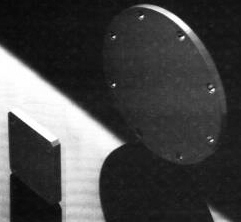
Shorting plates are metal connectors used to electrically connect two or more points together. They have several uses across different industries:
Electronics and Electrical Engineering: Shorting plates are commonly used in electrical and electronic circuits to create short circuits between terminals or points on a circuit board. This can be done for various purposes, such as testing, troubleshooting, or configuring the circuit.
Telecommunications: In telecommunications equipment, shorting plates are used to temporarily connect or disconnect circuits for maintenance, testing, or reconfiguration purposes. They help in quickly isolating or joining signal paths as needed.
Power Distribution and Control Panels: Shorting plates are often employed in power distribution and control panels to bridge connections between terminals. This allows for the temporary or permanent connection of electrical components or circuits within the panel.
Aerospace and Aviation: Shorting plates are utilized in aircraft wiring and avionics systems for various applications, including testing, maintenance, and system configuration. They help ensure proper electrical connectivity and facilitate troubleshooting procedures.
Automotive Industry: Shorting plates find applications in automotive electronics, particularly in testing and diagnostics. They can be used to simulate specific electrical conditions or to bypass certain components for troubleshooting purposes.
Industrial Automation: Shorting plates are essential components in industrial automation systems, where they are used to bridge connections between terminals in control panels, PLCs (Programmable Logic Controllers), and other electrical devices.
Medical Devices: In medical equipment and devices, shorting plates may be used during testing, calibration, or servicing procedures to establish temporary connections between electrical points for diagnostic purposes.
Research and Development: Shorting plates are valuable tools in research and development laboratories for testing prototypes, evaluating circuit designs, and conducting experiments where temporary or adjustable electrical connections are necessary.
Consumer Electronics: While less common, shorting plates may also be used in consumer electronics during manufacturing, testing, or repair processes to facilitate efficient assembly or troubleshooting.
Overall, shorting plates provide a convenient and reliable means of creating temporary electrical connections or isolating specific components in a wide range of industries and applications. They help streamline maintenance, testing, and configuration processes while ensuring the integrity and safety of electrical systems.
